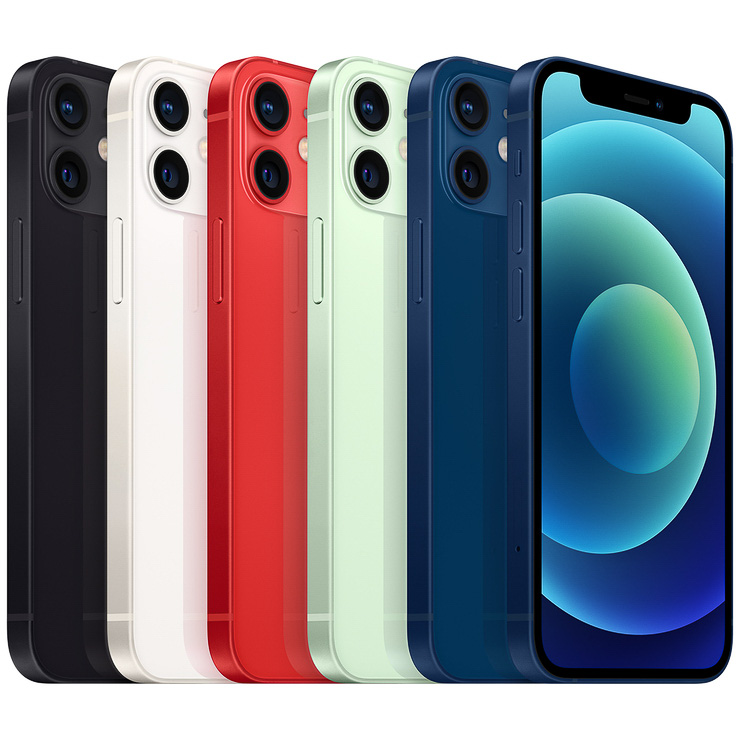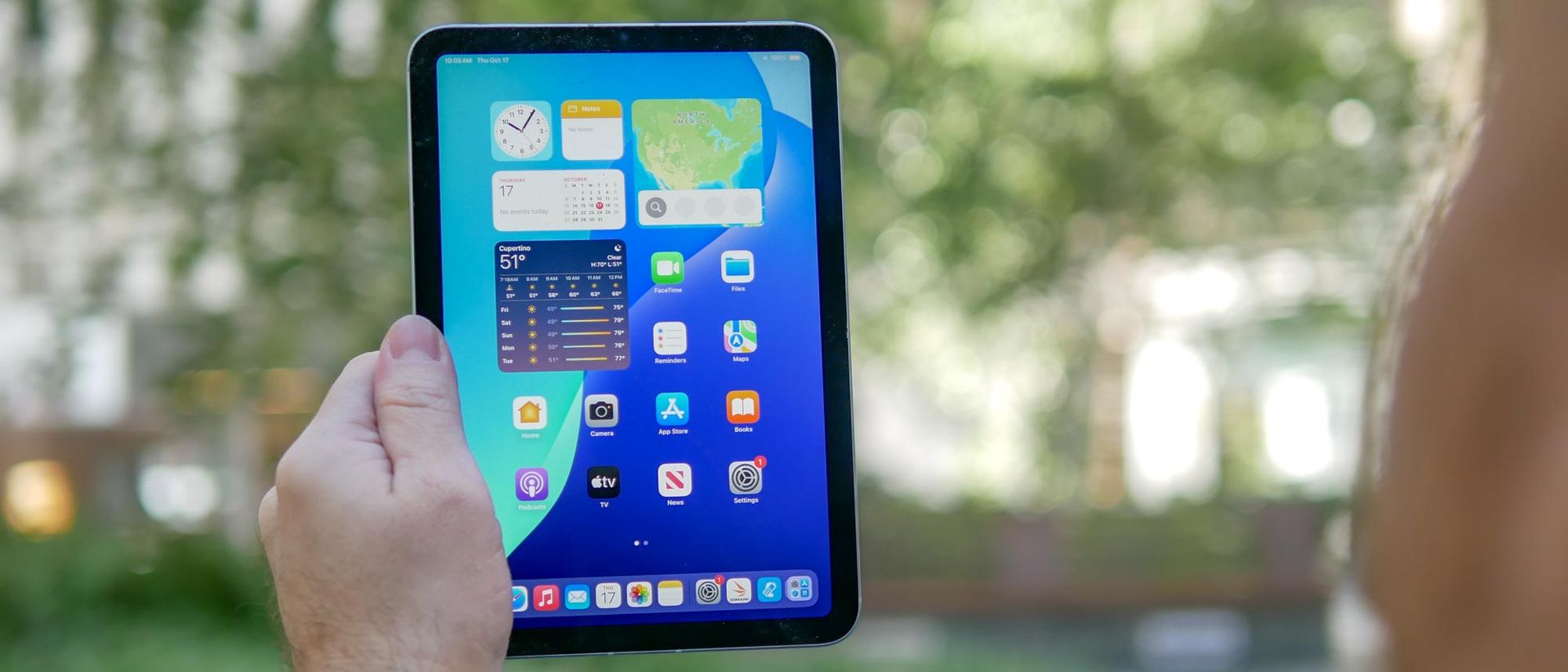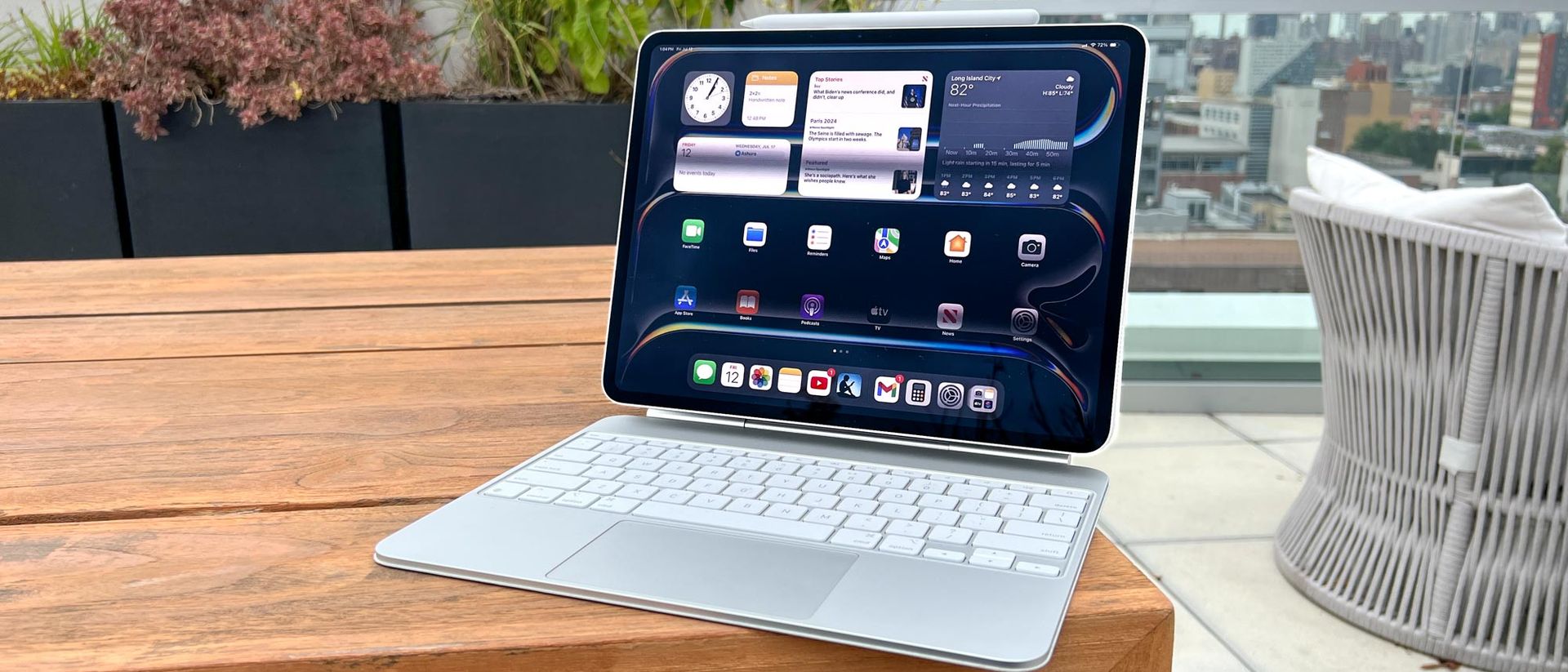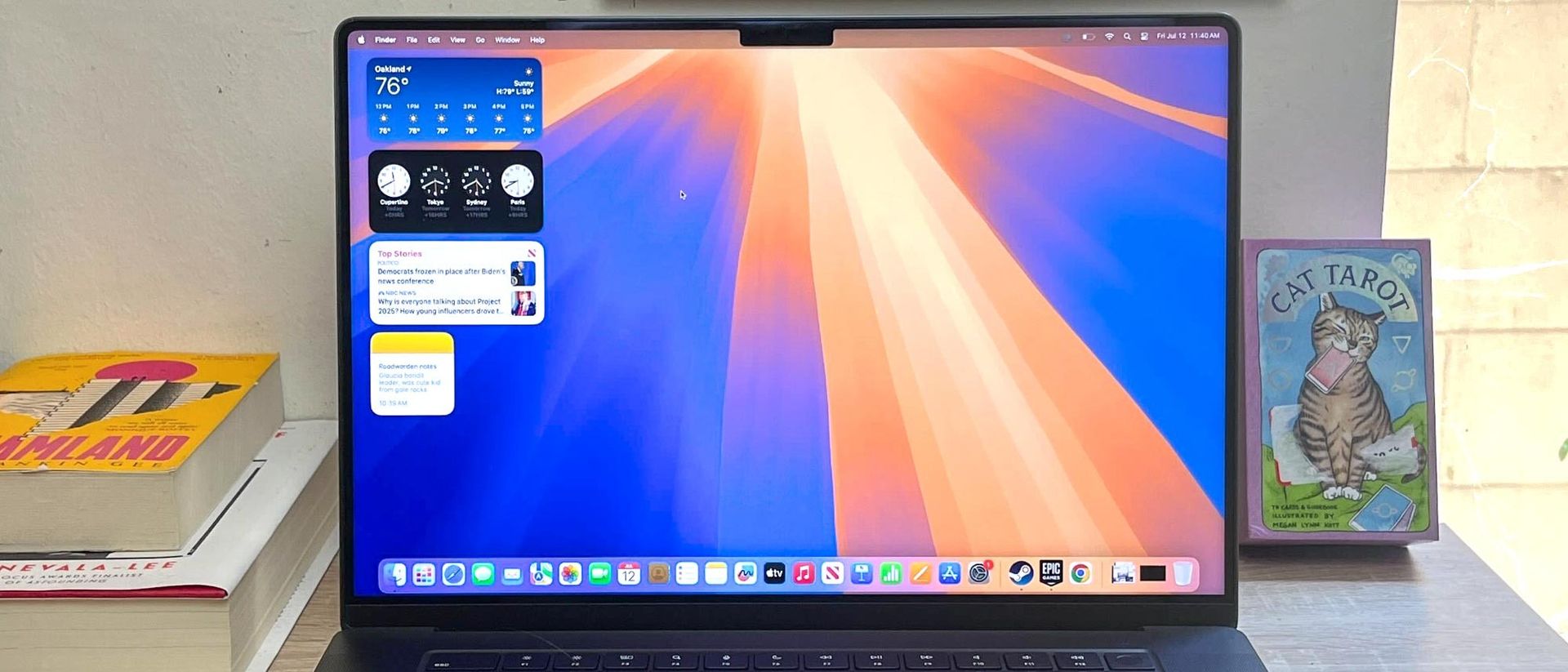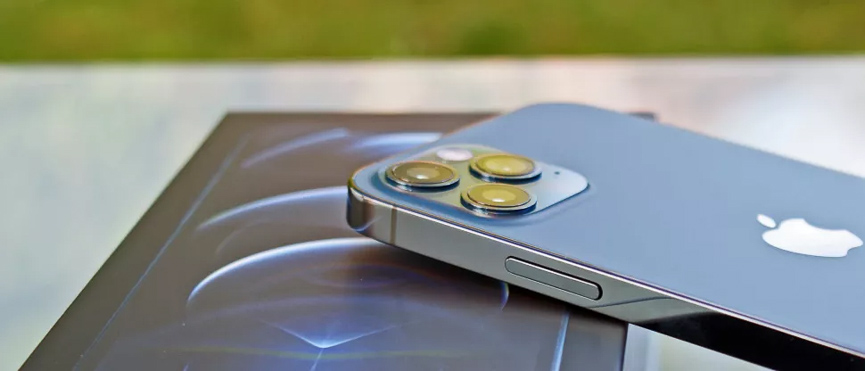
(Image credit: TechRadar)
Two-minute review
The iPhone 12 Pro is one of most feature-rich iPhones you can buy right now. It has the greatest of all of Apple’s features inside, and it’s certainly the model to consider if you’re questioning whether the iPhone 12 has enough raw power for you.
Announced alongside the iPhone 12, iPhone 12 mini and iPhone 12 Pro Max, the key upgrades over the iPhone 12 are subtle: there’s slightly more RAM, but the same chipset inside. There are three camera sensors on the rear, not two, so you can now get closer to subjects and scenes with 2x optical zoom.
The addition of LiDAR – that’s a new sensor on the rear camera to judge distance – brings more focusing options, and paves the way for more advanced augmented reality features in the future. But otherwise, the Pro is largely the same as the ‘standard’ iPhone 12 – it has exactly the same size, shape, screen technology and resolution, and debuts 5G and Apple’s MagSafe tech on an iPhone too.
The iPhone 12 Pro design is both futuristic and retro at the same time: the 6.1-inch OLED display is clear, bright, and extends further to the edges of the phone, meaning the 12 Pro is actually smaller than the iPhone 11 Pro in the hand.
However, you’ll notice instantly that the curved edges are replaced with stark, flat, industrial-looking sides – you lose the feel of the phone nestling into your hand when you pick it up, but it does feel more compact.
5G is an interesting addition this year. Apple clearly knows that it needed to bring the super-fast connectivity standard to the non-Android masses, and by including it in every new iPhone, it’s given the still relatively new tech a big shot in the arm.
However, we’re struggling to find many places to use it currently, and it’s a noticeable drain on battery life – as 5G becomes more prevalent, and cheaper, so will the iPhone 12 Pro become a more useful phone.
The key thing you’d buy the Pro for is its cameras, and both the photos and videos they capture are superb. The vibrancy of the movies we shot, and the clarity and smart processing of the snaps, made us eager to share them with friends, and encouraged us to experiment more with the camera. Night mode is absolutely stunning too, if not a little slow to process your snaps.
Battery life on the Pro could be better – it’s distinctly average in the 2020 smartphone environment. It’s fine if you’re not moving around too much, but if you’re on the go and using the phone moderately, you’ll see the charge meter dropping a little faster than you’d like. It feels like a tradeoff for the addition of 5G, so you’ll need to decide whether that’s a compromise you want to make.
That said, if you’re upgrading from a iPhone from three or four years ago, you’ll still see an improvement in battery life.
We’ve been struggling to see what in particular is great about the new iPhone 12 Pro, especially compared to the iPhone 12. The camera experience is the main thing that stands out, and the extra hardware in the form of the 2x zoom and the LiDAR feel like good reasons to spend a bit more.
If those things aren’t important to you, the iPhone 12 is probably a better buy; but, if you want those things and more, you might want to spend extra and opt for the iPhone 12 Pro Max instead.
Of course, if you’re not married to Apple there are also Android alternatives to consider, such as the Samsung Galaxy S21 and OnePlus 9 ranges, which also offer compelling flagship experiences. But the iPhone 12 Pro largely holds up well against them – despite these phones being newer than Apple’s.
If you just want the best phone from any brand though then at the time of writing that’s the Samsung Galaxy S21 Ultra.
Update: Apple has confirmed the iPhone 12 Pro will receive iOS 15 when it lands later this year, so you’ll get all the latest features on this handset.
iPhone 12 Pro price and release date
We are Tradelectronics, licensed second-hand electronics dealer located in Sydney CBD, experts in trading used laptops, old cameras & lens, and used mobile phones. Fast, Reliable & We Pay More! Get a free quote on your favourite WhatsApp, Facebook, SMS & Email, instant reply!
| Click icon for WhatsApp Quote | Click icon for facebook Quote |
 |
 |
- We are open from Mon – Sat 12pm – 7pm
- Get your free quote from WhatsApp and Messenger are highly recommended, we can guide you through in finding the accurate specs for your laptops, cameras & lens, mobile phones as well. As such we can provide a more precise quote for you.
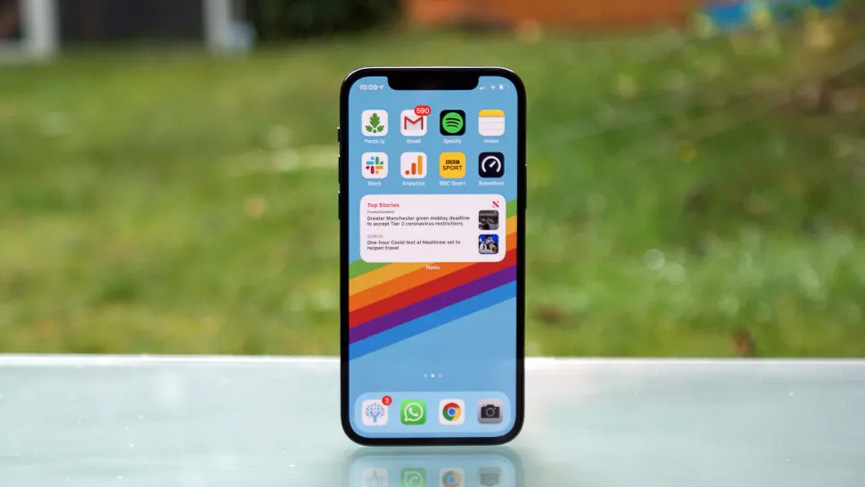
(Image credit: TechRadar)
The iPhone 12 Pro was announced alongside the iPhone 12, iPhone 12 mini and iPhone 12 Pro Max on October 13, 2020. While we originally expected to see the phones at the September Apple Event, in line with the typical iPhone launch window, the handsets were unveiled a month later, likely owing to the coronavirus outbreak’s impact on manufacturing and supply schedules.
The iPhone 12 Pro release date was October 23, 2020, and the iPhone 12 Pro Max followed later in November, but of course they’re both readily and widely available now.
The iPhone 12 Pro price starts at $999 / £999 / AU$1,699 for the 128GB model – that’s an improved minimum storage offering over both the iPhone 11 Pro and the base model of the new iPhone 12 – with the price rising to $1,099 / £1,099 / AU$1,869 for 256GB, and $1,299 / £1,299 / AU$2,219 for 512GB.
Over time those prices might drop a bit – at least in third-party stores – but as of May 2021 they’re still broadly what they were at launch, and we wouldn’t expect to see a big drop until the launch of the iPhone 13 range.
Design
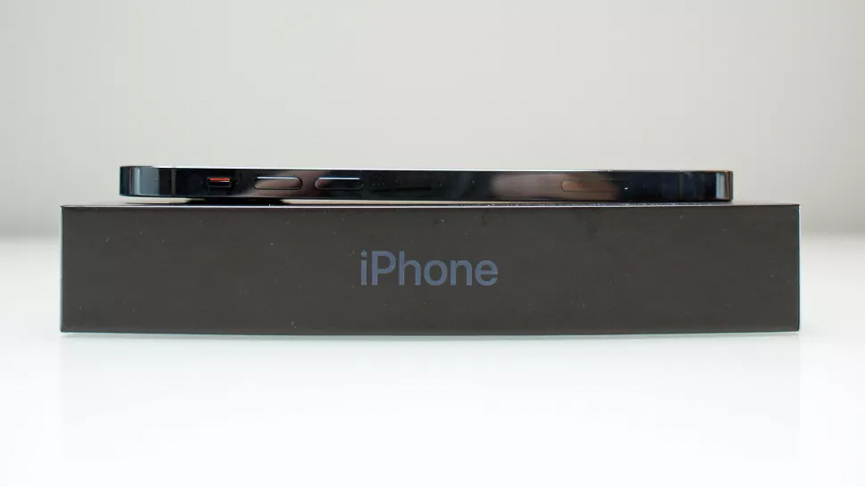
(Image credit: TechRadar)
The iPhone 12 Pro design is different from last year’s iPhone 11 Pro. Like all the handsets in the iPhone 12 range, it has flat sides with sharp, 90-degree edges.
It’s hard to tell whether this is something that’s primarily functional – more on this below – or just a change to the design language, to emphasize that this is a new iPhone, and an upgrade over last year’s model.
That’s actually rather key, because otherwise the iPhone 12 Pro looks similar in size to 2019’s Pro, and many buyers will want something that screams ‘Hey, look at me! New iPhone!’, so aping the design of the new iPad Pro range is a smart move.
It’s also unconfirmed whether the flatter design allows for better 5G signal strength – given that Apple wants the new iPhone range to become synonymous with the new speedy connection standard, it’ll have been keen to implement anything that helps in that area.
Another new addition is the Ceramic Shield on the front, which replaces the glass from the iPhone 11. Apple has worked with Corning to create a structure that it says isn’t actually glass, but rather a ‘nano-crystalline’ structure that has four times the strength of last year’s screen, so it should be harder to break your new iPhone.
And while the rear of the iPhone 12 Pro is still the same glass as used in 2019, the new edge design will apparently make it twice as resilient as its predecessor in the event of a drop.
It’s important to note that Apple isn’t calling these iPhones unbreakable – it’s just saying they’re more robust. The IP68 rating has been improved to allow you to submerge your iPhone 12 Pro deeper than before, which in reality means it’s more water-resistant (not waterproof, of course).
If the iPhone 12 Pro lands at the wrong angle after a slip or a drop, it can still break – our first unit suffered a crack across the rear glass after landing flat on concrete following a heart-stopping slip from a table, and small scratches landed on the rim.
So if you’re thinking that you can do without a case and / or a screen protector, think again – the new iPhone 12 Pro screen can still be scratched by sharp objects, or the glass broken, even if it has a far greater degree of protection (especially on the front screen and with greater water resistance than ever before) than the iPhone 11 range.
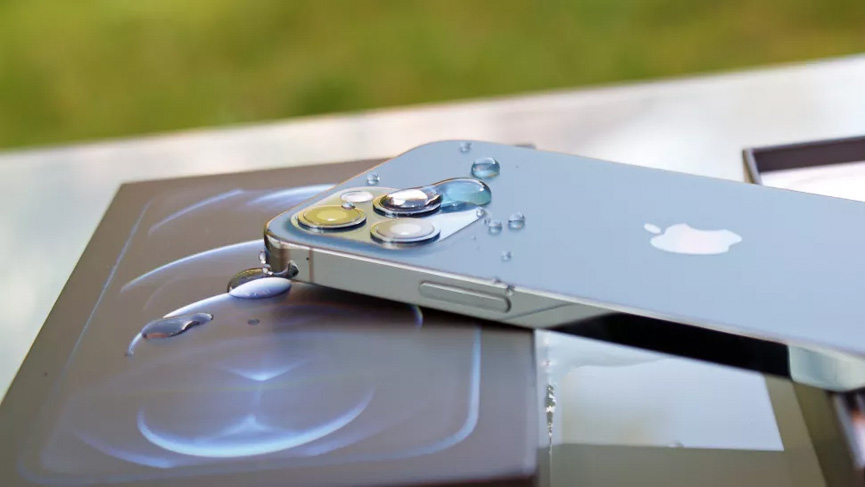
(Image credit: TechRadar)
The flatter edges of this 6.1-inch-screened phone do make it easier to press the buttons on the sides, as they feel slightly more pronounced; the phone isn’t more comfortable to hold than last year’s iPhone 11 Pro, but it is a little easier to use.
And let’s not forget about the new colors: the iPhone 12 Pro comes in Graphite, Silver, Gold and Pacific Blue, which are more muted and, well, professional-looking than the more garish options on offer with the iPhone 12.
One of the other big pieces of news here is the omission of a charging block and EarPods from the box. Apple claims this will have a huge environmental impact (and it probably will), and believes there’s no need to include a charger because everyone already has one lying around.
That’s true – most of us have a drawer full of them. And if your Lightning cable is still functioning fine, then you’ve got nothing to worry about.
However, if you need a new Lightning cable and were waiting to get a new iPhone to get one, or if this is your first iPhone, you’ll need to buy a new charging block, as the cable in the 12 Pro box is USB-C to Lightning, which is a newer type of connection, and relatively few people are currently likely to have a charger with a USB-C port.
We understand that Apple is trying to reduce the environmental impact of its products, with so many of these charging blocks going unused – but surely it would make more sense for Apple to do this once USB-C blocks are more ubiquitous? Otherwise this feels like an effort to get people to upgrade to the faster charging experience, which the $19 / £19 / AU$29 20W USB-C charging block offers.
Display
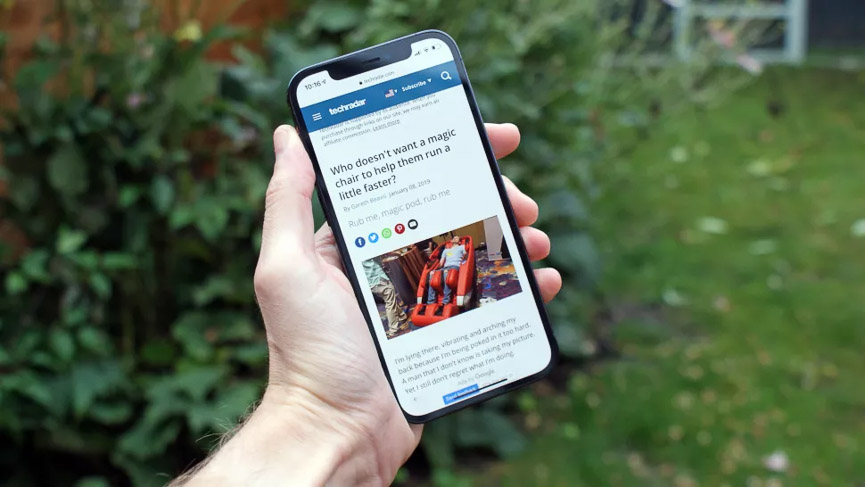
(Image credit: TechRadar)
The iPhone 12 Pro has, essentially, the same OLED screen technology as last year. The big change is to the screen size, which increases from 5.8-inch to 6.1-inch without adding to the size of the iPhone 12 Pro’s chassis compared to last year’s model.
It’s now the same size as the display on the iPhone 12, which is surprising. We’d have expected Apple to do more to differentiate between those two models, given that they share the same design, and a slightly larger screen would have been a good way to do that.
With OLED technology used here you’re getting one of the best screens around; it’s able to display deep blacks, vivid whites and a vast range of colors, especially when you’re viewing HDR footage.
We find that anything packing an explosion always looks good in HDR, as the bright fireballs are clear, while faces or other dark objects nearby are still visible.
That said, we’re not entirely convinced that HDR is really needed on a phone – some of the non-HDR Netflix content we watched looked brilliant, but some of the movies on iTunes (which are automatically upgraded to HDR for free) looked a little too dark in parts.
But the iPhone 12 Pro display is one of the best out there, whether you’re looking at high-quality photography from Instagram or just want to enjoy your home movies, which can be captured in the high-end Dolby Vision format in 4K, at a buttery-smooth 60 frames per second.
It would have been nice to see 120Hz display technology debut on an iPhone with the Pro and Pro Max. This higher refresh rate makes scrolling around your phone look and feel much more fluid, and considering that a lot of top-end Android phones now have this feature it’s a shame that it’s missing from Apple’s top models in 2020.
5G
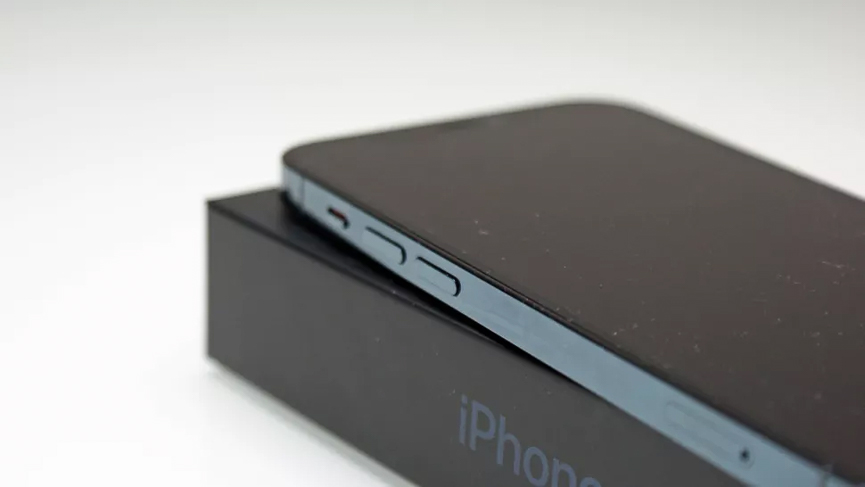
(Image credit: TechRadar)
5G has been a tricky feature to review, because some people will find it to be brilliant, and others won’t be able to use it fully, if at all.
If you buy any of the new iPhone range you’re getting 5G connectivity as standard, and that’s an excellent thing. Apple is smuggling the next-gen connectivity tech into your next phone, whether you want it or not.
When it works as it can, it’s game-changing. Downloading a 110MB audio book took us just 30 seconds, and where our 4G phone couldn’t connect to Spotify thanks to network congestion in the middle of a city, we were able to instantly connect and start streaming over 5G on the iPhone 12 Pro (on EE in London, UK).
5G might seem flashy, and it’s hard not to be dazzled by promises of speeds of 200Mbps on the go, but it’s actually a really useful and robust technology. It’ll allow you to connect seamlessly to the internet in crowded environments – if you’ve ever tried to browse the web at a sports event, or upload a photo while at a concert, you’ll appreciate being able to do those things with ease over a 5G connection.
At least, that’s the theory. The issue here is that while the iPhone 12 Pro can connect to a huge variety of different 5G networks, including mmWave in the US with Verizon, these networks haven’t fully rolled out yet in many locations.
We had to switch towns to try out 5G speeds, and while they’re great to have when you can access them, if you don’t have 5G in your home, or reliably on your commute, then it’s currently not worth getting a 5G phone just for that tech. But it will be pretty much everywhere one day – and the data plans will become cheaper too, so your iPhone 12 Pro will become more useful as time goes on.
Just don’t go thinking that right now, 5G is going to change your life. It’s an expensive luxury that, as you’ll see later on, comes at the cost of battery life – but when it works, it is next-generation stuff.
MagSafe
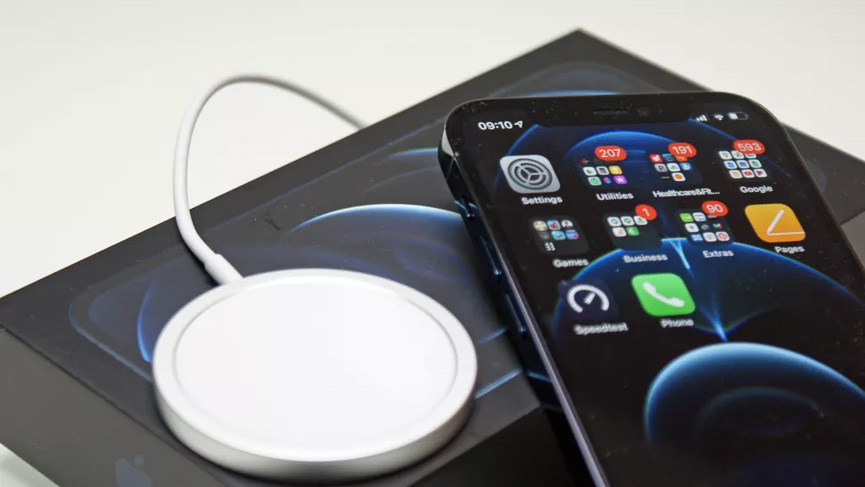
(Image credit: TechRadar)
We’ve observed many times how Apple rarely invents a new technology – more often it just takes existing tech and puts its own stamp on it it (and then the world seems to think that Apple did in fact invent it).
That’s the case with MagSafe, a set of magnets under the casing on the back of the iPhone 12 Pro. It’s named after the magnetic power adaptor supplied with older-generation MacBooks: this safe magnet (wait… we just got the name) would snap out if you snagged the power lead, rather than pulling your laptop onto the floor.
The new MagSafe works a little differently, ensuring a very firm hold when you snap on an accessory. Currently, these accessories are limited to cases, a charger and a wallet add-on. MagSafe accessories can also communicate what they actually are to your iPhone, which has a number of benefits.
With the MagSafe charger, for example, the magnets align the phone right in the center of the charging pad, and because the iPhone 12 Pro knows it’s a compatible charger, it’ll juice up your phone with twice the wireless power of last year.
Returning to our point about Apple putting its own stamp on existing tech, many smartphone fans will remember the magnetic accessories for the Essential Phone, or the snap-on Moto Mods range. These were the trail-blazers for clip-on accessories, and – especially in the case of the Moto Mods, which have now been discontinued, and can be found on sale on Motorola’s website– we lamented the fact that they were never more of a success.
Actually, that’s unfair. The Moto Mods program unleashed so many cool ideas: clip-on smart speakers, high-end cameras, even a projector. While Motorola couldn’t generate the scale to make its system viable, Apple certainly can, and in a few months we could be up to our eyes in third-party MagSafe accessories.
But, as with 5G, this feels like a feature for the future, rather than one to be excited about right now. Currently, buying an iPhone 12 Pro so that you can enjoy the benefits of MagSafe will only make sense if you also invest in a wireless charger, which costs $39 / £59 / AU$89, and one of the newer (and slightly more expensive) cases that have a MagSafe ‘passthrough’ so you can leave the cover on and still wirelessly charge. (For us, that’s a game-changer, and will encourage users to leave a protective case on, rather than eventually giving up and leaving it off after having to remove it for the hundredth time in order to wirelessly charge their phone).
Using MagSafe is really cool when you feel the charger snap into place – it’s like lobbing the Apple Watch 6 onto its charging pad, but with much stronger magnets. But we’d recommend waiting a while to see what new accessories appear – if the ecosystem really flourishes, it’ll become a great reason to make the upgrade.
Camera
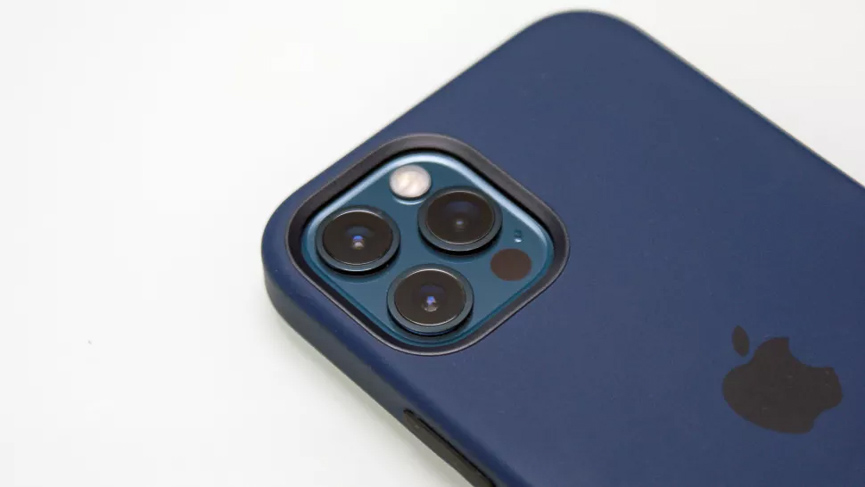
(Image credit: TechRadar)
The iPhone 12 Pro camera array consists of three distinct snappers: there’s a regular ‘wide’ option, an ultra-wide sensor, and the telephoto 2x zoom for getting closer to your subjects (which also makes the iPhone 12 Pro’s portrait mode more efficient).
There’s a fourth sensor here: the iPhone 12 Pro and Pro Max come with a LiDAR scanner, which makes it easier for the iPhone to work out what it’s looking at. While that sounds like you’ll be able to scan whole rooms and rearrange them virtually in an instance (and in fairness, that capability is available right now, it’s just that, basically, no apps are using it well), it’s actually more useful for detecting people’s faces in low light, enabling the camera to auto-focus speedily.
I good lighting we didn’t notice the cameras focusing appreciably faster thanks to the LiDAR sensor, but when it comes to Night Mode portraits (which we’ll get to in a moment) it really was a useful feature.
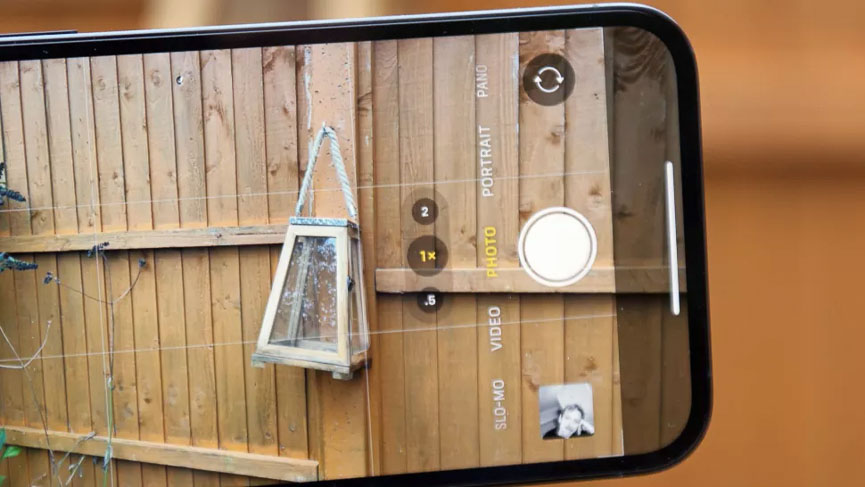
(Image credit: TechRadar)
The other big change on the iPhone 12 Pro and Pro Max, cameras-wise, is the introduction of the ProRAW file format. If you want to know more about this, then check out our Cameras Editor Mark Wilson’s excellent explainer on it.
Basically, it’s similar to the raw format that many photographers use, which preserves all the image information captured by the sensor to give you greater flexibility when editing. However, if you don’t know how to take advantage of this extra information by processing your raw images, they can look flat and dull compared to JPEGs, which are process in-camera, or in your phone.
Apple’s ProRAW bridges the gap, as images are computationally improved by the phone’s software, but you’re still able to edit and enhance them in your favorite photo editing app, or directly from within Photos itself apparently.
We say ‘apparently’ as ProRAW wasn’t available when the iPhone 12 Pro first launched, instead being added later as a software update. As it wasn’t ready when the bulk of this review was being written, we haven’t fully tested it yet.
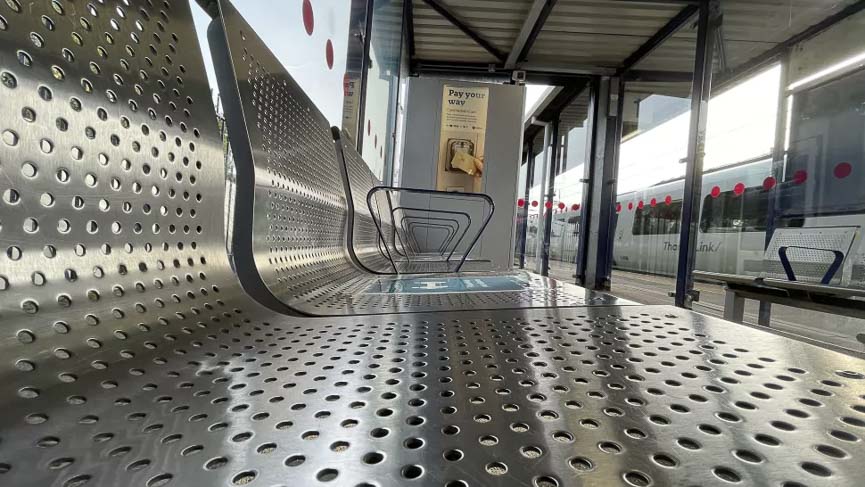
(Image credit: TechRadar)
While the iPhone 12 Pro cameras don’t seem to be that much of an upgrade from the 11 Pro range last year, with the same 12MP sensors on all three, the big news is that you can now use Night Mode with all of them, rather than just the main camera.
Night Mode was a really impressive feature when it landed on the iPhone 11 last year, and it can dramatically brighten any photo – even ones taken in almost pitch-black conditions, as long as you’re able to hold the phone still for 1-15 seconds (depending on how dark it is).
It’s truly impressive when you see the results, as it can literally turn night into day (on your phone’s screen). However, if there’s any shake in your hand while you’re capturing a shot it can quickly become a blurry mess, especially when you’re using the zoom or ultra-wide cameras.
The primary wide camera on the iPhone 12 has been upgraded for better low-light performance – thanks to a wider f/1.6 aperture it does make the average indoor photo at night that little bit brighter, as well as giving the Night Mode function a brighter start image to work from.

(Image credit: TechRadar)
Night Mode has been extended to the front camera too, so you can capture better-looking selfies in darker conditions. You can also use portrait mode in the dark, with the Retina Flash (where the screen illuminates to brighten your face) slowly dimming to capture the moment.
This is one area where the iPhone 12 Pro has a clear advantage over the iPhone 12: the additional LiDAR sensor allows you to take clear, in-focus Night Mode portraits, where the iPhone 12 simply can’t take in enough light to apply accurate background blur effects.

(Image credit: TechRadar)
The selfie camera, in general, is a step up from previous years – it’s got nearly every feature that the rear sensors are offering, with things like Smart HDR 3 for better image processing, Dolby Vision video recording and Deep Fusion image enhancement too. However, we still see annoying thing like strands of hair being blurred as part of the background, and sometimes a soft ‘halo’ effect around subjects.
One of the big features that Apple is touting for the iPhone 12 Pro and Pro Max is the ability to record, edit and watch Dolby Vision content in 4K at 60 frames per second, such is the enormous grunt of the iPhone 12 Pro.
As we’re not seasoned filmmakers, this is something that’s a little hard to test with confidence, but the image stabilization, even when we were running, is something to behold; and the results were vibrant, and looked far more realistic when shot at 4K and 60 frames per second, to the extent that they appeared almost too true to life.
Specs and performance
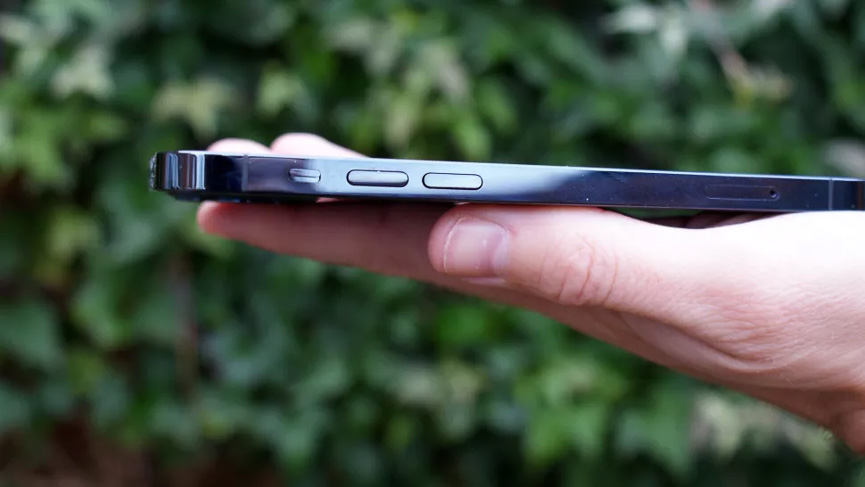
(Image credit: TechRadar)
As the iPhone has been one of the most powerful smartphones in the world for a while now, it almost feels redundant talking about the grunt of the iPhone 12 Pro. However, given that many will be buying it for this reason, it’s worth diving into.
The phone is powered by the A14 Bionic chipset, and appears to come with 6GB of RAM (according to our diagnostics) to allow for maximum capability when doing things like the aforementioned video editing on the fly.
This is more than enough power to get through pretty much any task, although it does feel like the iPhone 12 takes a small while to process photos to get them fully sharp and looking great as part of the Deep Fusion optimization – it’s something we commented on last year, and it’s surprising that it’s not been fixed.
However, let’s not beat around the bush: the iPhone 12 Pro is the most powerful smartphone we’ve ever tested, thrashing the competition when it comes to raw power.
Whether most people will be able to get the most out of that power is another question, but if you know that you’ll need a phone that can withstand the most demanding of apps, this is the one to go for (although, curiously, we didn’t see any difference in performance between the iPhone 12 and iPhone 12 Pro, despite the latter packing 6GB of RAM, compared to 4GB – and that usually confers a big power boost).
There’s also the improved storage to talk about: the iPhone 12 Pro starts at 128GB capacity, and goes up to 512GB for the most expensive option.
This feels like one of the most compelling reasons to spend a little more to buy the 12 Pro – where the iPhone 12 costs $799 / £799 / AU$1349, that’s only for the 64GB model, and moving up to 128GB is pretty much essential if, for example, you’re going to be recording a lot of high-resolution video files.
Software
We won’t dwell on the software, as like all remotely recent iPhones this runs the latest version of iOS, which at the time of writing is iOS 14.5.
That’s several small updates on from the iOS 14 software that the phone launched with, and these tweaks have added things like Apple Fitness Plus, which gives subscribers access to a range of workout videos, ProRaw, which we’ve detailed in the camera section, App Tracking Transparency, new emojis, and more.
iOS 14 itself meanwhile adds home screen widgets, an App Library, and dozens of other features, changes and improvements. Again, you don’t actually need one of the latest iPhones to get most of this stuff, but if you do get the iPhone 12 Pro you can be sure of software updates for years to come – with iOS 15 later in 2021 being the next big one.
Battery life
The battery life of the iPhone 12 and 12 Pro is something of a mystery, insofar as we’re hearing reports (currently unconfirmed) that the latest iPhones have smaller batteries than the previous generation.
That would add up, as surprisingly the iPhone 12 Pro is confirmed by Apple to last one hour less for video playback compared to the 11 Pro from 2019.
In terms of overall battery life, we noticed that with light use (as in not using the phone much during the day for browsing and playing games, just photography and listening to music via Spotify) we could easily make it to midnight with more than half the battery remaining, and the phone can actually make it through 48 hours before desperately needing a charge.
However, don’t let that fool you into thinking that the iPhone 12 Pro battery life is excellent – it’s not. It’s just that when spending most of their time on standby, the iPhone 12 range are super-efficient – so if you’re spending more time at home connected to lovely, stable Wi-Fi you might be very pleased to discover that you don’t need to constantly worry about battery levels.
But when you’re out and about, it can be more of a mixed bag. Especially when we were using the phone for web browsing, playing games, or generally keeping the screen fired up when going in and out of 5G signal (a common occurrence while the networks are still being rolled out), battery life was much ‘slippier’.
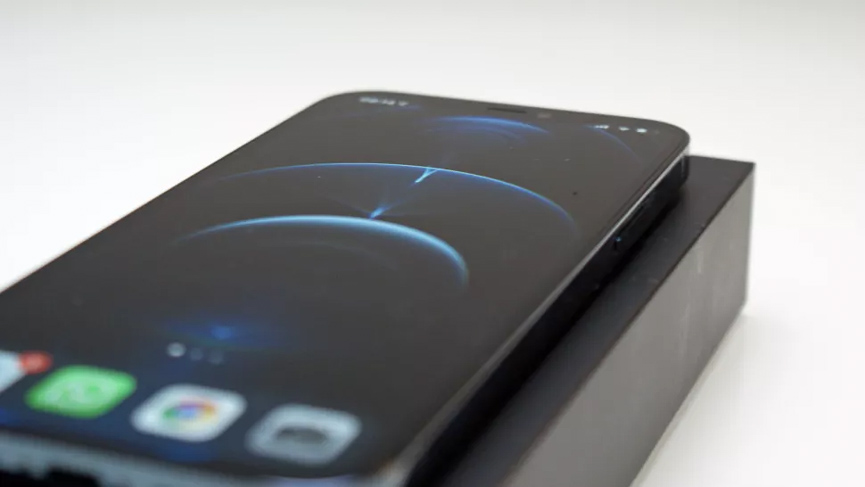
(Image credit: TechRadar)
When things are quiet in the office or at home, the iPhone 12 Pro won’t be drawing much power at all; but when you’re moving, expect to lose between 10-15% per hour, even if you’re not using the phone constantly (and more if you’re playing an intensive, connected game or browsing the web, for instance).
That’s not as good as some recent iPhones, like the iPhone 11 or iPhone XR, and certainly not at the same level as many Android phones – but we’d call it ‘acceptable’.
In our testing benchmarks, there’s also a clear drop in battery life when using 5G networks compared to 4G, which means one of the big new features of the iPhone 12 Pro comes with something of a drawback. You’ll get 15-20% less battery life if using 5G signal only on the iPhone 12 Pro, which is likely why Apple has added in a smart data mode that slows 5G speeds to 4G levels if 5G isn’t needed.
One thing to remember: if you’ve not got an old Lightning cable and charging block lying around, you’re going to need to go out and buy a fast charging block, as the iPhone 12 Pro doesn’t come with one in the box.
That’s not the end of the world, as they’re reduced in price and you genuinely will get a much more rapid charging experience. However, the need to pay an extra $19 / £19 / AU$29 feels a bit galling, especially when you’ve paid so much for the iPhone 12 Pro.
Verdict
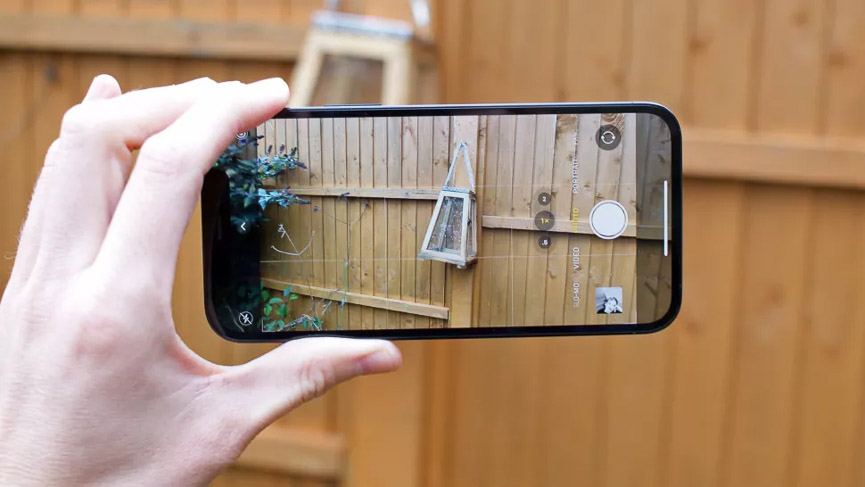
(Image credit: TechRadar)
At first glance, the iPhone 12 Pro is a tough sell over the main iPhone 12. The phones look identical, and a glance at the spec sheet shows them to be similar on the inside too. However, there are some key areas that impressed us more: the iPhone 12 Pro colors are lovely to look at, with the Pacific Blue one of the nicer shades we’ve seen on a phone.
Scratch the surface and you’ll actually see a more compelling phone. The telephoto zoom is quite useful – arguably more so than the ultra-wide sensor. The LiDAR scanner, while still in its infancy as technology for an iPhone, is already proving to be helpful when shooting in low light, and there’s that issue of storage too – starting at 128GB is far more palatable than 64GB for the modern smartphone user.
If you’re thinking you’ll need that extra bit of RAM, or just want to make sure you’ve got one of the best phones Apple has put out, then you may well feel it’s worth paying that bit extra. If you want even more than that, you may prefer the iPhone 12 Pro Max.
Source: Techradar

